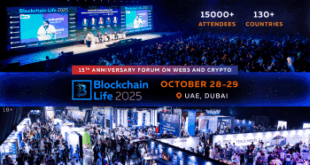IT Service Management (ITSM) has undergone a significant metamorphosis since its inception, evolving to meet the changing demands of both organizations and end-users. The entry of automation and Artificial Intelligence (AI) in ITSM stands out as a remarkable turning point in this journey, changing how services are managed and delivered.
The early ITSM landscape was characterized by manual processes, often leading to inefficiencies, inconsistencies, and longer response times. However, with the initial forays into automation, tasks became streamlined, offering a hint of the potential ahead. Still, this early automation had a narrow range of applications.
The Rise of Automation and AI in ITSM
The merging of automation and Artificial Intelligence (AI) has paved the way for significant advancements. While both automation and AI have distinct characteristics, their combined application in ITSM tools has revolutionized the sector.
At its core, automation denotes the streamlining of a set of predefined operations to simplify and accelerate tasks. It involves establishing processes that, once set, can execute tasks without human intervention, ensuring consistency and speed. On the other hand, AI transcends mere rule-based operations. It refers to machines’ capacity to learn from vast amounts of data, adapt, and subsequently make decisions or predictions based on this acquired knowledge.
The contemporary ITSM tools blend these technologies, creating a synergistic system that optimizes service delivery. This integration offers several advantages:
Enhanced responsiveness: By automating routine processes and leveraging AI’s predictive capabilities, ITSM tools can respond to issues more rapidly.
Cost efficiency: Automation reduces the need for manual input, leading to decreased operational costs.
Predictive insights: AI algorithms can anticipate potential issues or needs, allowing for proactive measures rather than mere reactive ones. This forward-thinking approach drastically improves service quality.
Changing Customer Outlook
The integration of automation and AI has profoundly influenced customer perceptions and expectations:
Enhanced customer experiences: With the dual power of automation and AI, ITSM tools can achieve faster ticket resolutions. Moreover, they can proactively identify potential issues and curate personalized user experiences based on past interactions and preferences.
Increased trust in technology: The consistent and transparent results delivered by these advanced ITSM tools instill a newfound trust in technology. Customers now feel more assured, knowing the outcomes are predictable and transparent.
Evolving expectations: The digital age has conditioned customers to expect instantaneous and 24/7 support. They also lean towards tools that empower them with self-service capabilities, enabling them to troubleshoot or resolve minor issues independently without waiting for assistance.
Shifting Employee Perspective
The rise of AI and automation also has notable implications for employees:
Empowerment through technology: By handling repetitive and routine tasks, automation allows employees to redirect their energy towards more strategic, creative, and value-added endeavors. Monotonous tasks no longer bog them down.
Upskilling and continuous learning: The increasing prominence of AI in ITSM underscores the importance of continuous learning for employees. There’s a growing demand for training programs that equip staff with the skills to work alongside and harness the potential of these intelligent systems.
Improved morale and satisfaction: Freed from the chains of mundane tasks, employees find more joy in their work. Their innovative efforts and contributions gain more visibility, leading to increased job satisfaction and a sense of fulfillment.
Use Cases of Automation and AI in ITSM
Automation and AI integration in IT Service Management (ITSM) have led to notable shifts in customer and employee perceptions of technology. Here are a few use cases illustrating these changes:
Automated Service Desk Operations
AI-driven virtual assistants or chatbots now handle initial customer queries and complaints. These bots are trained to resolve common issues and direct more complex problems to human operators.
Impact on Outlook
Customers: Faster and more consistent responses lead to enhanced user satisfaction. With immediate solutions to common problems, customers often feel technology is more accessible and responsive to their needs.
Employees: Staff no longer need to deal with repetitive, routine tasks, allowing them to focus on more complex, high-value issues. This boosts job satisfaction and enhances their perception of technology as an enabler rather than a burden.
Predictive Analysis for Incident Management
AI-driven predictive analytics can foresee potential IT infrastructure issues before they affect end-users. AI can notify IT teams about potential future disruptions by analyzing patterns and trends.
Impact on Outlook
Customers: With fewer incidents affecting service delivery, customers view the IT infrastructure as more reliable and robust. This builds trust and reduces the frustrations associated with service disruptions.
Employees: Proactive problem management allows IT teams to work on solutions before issues escalate, fostering a sense of accomplishment and reducing the stress of reactive problem-solving.
Self-Service Portals and Knowledge Management
Advanced AI algorithms sift through vast data to curate and present relevant knowledge articles or solutions to customers and employees in self-service portals.
Impact on Outlook
Customers: Empowered with information, customers can resolve issues independently, leading to a sense of self-reliance and a more positive view of the technological infrastructure.
Employees: Access to a well-organized, AI-curated knowledge base means reduced time searching for solutions, leading to faster issue resolution and a more positive view of internal tools.
Automated Workflow and Task Allocation
Automation tools in ITSM can distribute tasks based on current workloads, skill sets, and other parameters without human intervention.
Impact on Outlook
Customers: This results in quicker ticket resolutions and a more seamless support experience, enhancing the customer’s view of the organization’s efficiency.
Employees: Employees benefit from balanced workloads and tasks matching their skill sets, leading to increased job satisfaction and a more positive view of technology’s role in their daily tasks.
These use cases, among others, exemplify the evolving landscape of ITSM through AI and automation, painting a future where technology not only streamlines processes but also significantly improves the experiences of both customers and service providers. However, there are a few challenges that must be overcome.
The Challenges and Concerns
Fear of job displacement: The biggest concern remains the potential redundancy of some roles.
Human-AI interaction: Striking the right balance between human intuition and AI efficiency is crucial.
Ethical and bias issues: Ensuring AI decisions are impartial and just is essential.
Transparency: Stakeholders need clarity on how decisions are made in automated processes.
Future of ITSM with Automation and AI
As ITSM evolves, we anticipate even tighter integration of AI, leading to more proactive and self-healing systems. Ethical considerations around AI will gain more prominence, ensuring responsible technology usage. However, humans will always remain at the core of ITSM, steering and guiding the systems towards desired outcomes.
Automation and AI are not just reshaping ITSM but revolutionizing it. As technology continues its relentless march forward, businesses must adapt, learn, and evolve to harness its full potential. This transformation, though challenging, promises a future where technology and humanity work in perfect harmony for superior service delivery
Satish Kumar V
CEO
EverestIMS Technologies
 Newspatrolling.com News cum Content Syndication Portal Online
Newspatrolling.com News cum Content Syndication Portal Online






